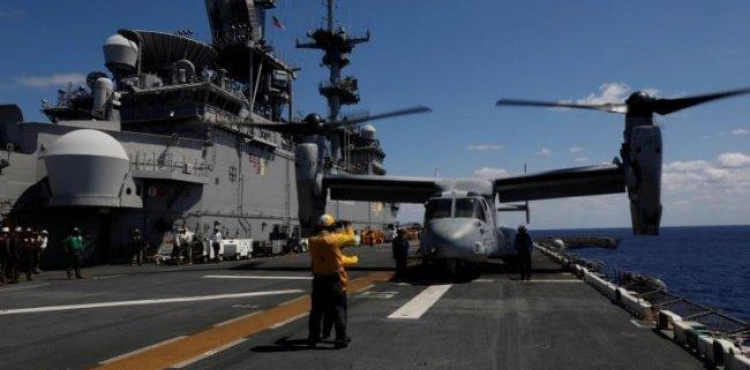Washington _ Agencies
In the past few days, the Pentagon has uncovered some of its weapons expected to be used in the coming wars, including thousands of small-scale drones, ships without a captain, and smart satellites.
At its annual meeting, the Advanced Defense Research Projects Agency, the U.S. Army´s scientific arm, presented its vision for tomorrow´s battles, with artificial intelligence playing a major role.
A large number of scientists and generals have been on the podium for three days, explaining how to paralyze and triumph over the "enemy " defense devices by entering into a battle with him in a "mosaic " way involving invisible F-35 aircraft, with "swarms" of combat drones and surveillance Or refueling, with satellites, ships and submarine drones without a leader.
In late August August, the Pentagon awarded the Boeing American Aviation Group A US$805 million contract for the development of its first fuel-refueling aircraft with the name "Steongrai ".
The drones will be launched from aircraft carriers, giving us fighter jets much more room to carry out tasks that are impossible for them today.
The agency also provided this week a series of programs, all of which are geared towards "automation ", such as the "Black Jack " Project, which involves the manufacture of a large range of low-cost satellites ($6 million per moon) moving in a lower orbit and providing continuous information on military operations.
If one of these satellites is destroyed, another moon takes its place.
The agency also commissioned the development of the "Grandens " program, which will allow the recovery of small-scale drones from aboard transport planes.
The aim is to disperse the defenses of the "enemy" through a large number of low-cost drones capable of conducting reconnaissance missions and providing close air support. These drones can be used in twenty missions.
The agency is also working to build a March submarine capable of carrying out missions up to thousands of nautical miles, in addition to manufacturing a March surveillance vessel called "Sea Hunter" capable of sailing in the oceans for several months with respect for international maritime itineraries. This year, the U.S. Navy has received the first model of the ship.












